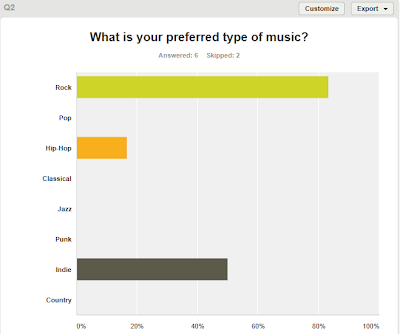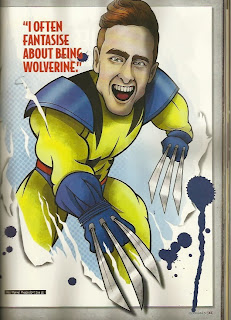I created a survey by using SurveyMonkey.com and this allowed me to gather audience research to help in the making of my music magazine.
The first question was just simply asking the audience how often they read magazines, most people said monthly, which would influence me to make my magazine maybe an every week or maybe every two week publication, as if it was daily, it may not sell continuously; nobody who participated in my survey said they read magazines daily.
When asked what their favourite music was, most of my audience said rock, followed by indie, which works well as it is what my target genres are.
I asked my audience what the price of my magazine will be, and they said something between £2.00 and £2.99, which is what I was aiming for.
This question demonstrates a variety of answers, showing that the audience like to see reviews, interviews, tour dates etc.
This question demonstrates that the eye-catching aspects of a magazine that grab the audiences attention are whats inside, and the focus of the magazine.
The audience said how the most important aspects are whats inside and whats on the cover, as oppose to giveaways.
This question showed various answers which I will take into consideration - however most popular being upcoming bands, which is what I was going to focus on anyway.
The type of giveaways people would like to see are CDs made by the magazine and posters, and I intended to use posters.















